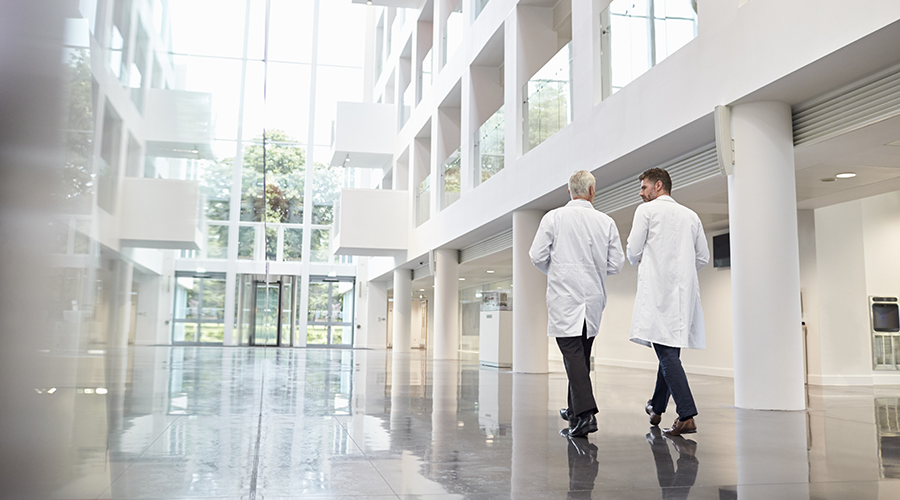Since less laborious practices for soil removal are always attractive, the danger exists that traditional cleaning methods are forgotten or ignored. Few studies have examined detergent-based processes or modelled these processes against healthcare-associated infection (HAI) risks for different patient populations.
Fear of infection encourages the use of powerful disinfectants to eliminate real or imagined pathogens in hospitals. Not only do these chemical disinfectants offer false assurance against contamination, but their disinfection potential also cannot be achieved without the prior removal of organic soil.
Detergent-based cleaning is cheaper than using disinfectants and much less corrosive and toxic. Hospital cleaning in the 21st Century deserves further scientific investigation for routine outbreak practices.
Updating language
Microbes linked with HAI have two special properties. They cause disease, and they survive in hospital environments for weeks. Dust-associated microbes, such as Methicillin-resistant Staphylococcus aureus (MRSA) and Acinetobacter, settle on rarely cleaned or inaccessible surfaces such as shelves, highly placed equipment such as televisions and monitors, power cords and leads and computer keyboards.
Environmental services managers should avoid the unqualified use of the word cleaning in communicating hygiene practices with the cleaning staff. I propose replacing “clean” or “cleaning” with “hygienic cleaning” to refer to any process intended to reduce the number of pathogens on surfaces to an acceptable safety target level, which makes it fit for purpose, and “hygienically clean” to define the state of that surface after hygienic cleaning.
The science behind decontaminating a patient’s room requires the removal of the phrase “clean when visibly soiled.” Increasingly, the data show that potentially unsafe levels of pathogens can remain on visibly clean surfaces. Fecal matter the size of a pinhead contains sufficient infective material to transmit C. diff. When staff are instructed to clean visibly soiled touchpoint surfaces, are they looking for soil the size of a pinhead? No.
Washing or scrubbing a surface physically removes soil, and with the soil goes the “bad guys.” I don’t need six peer-reviewed papers to know that the process should remove germs with hygienic cleaning, if possible, rather than kill them with toxic or corrosive disinfectants.
It needs to be made clear that in hygiene practice, a surface can only be considered safe if it has been subjected to a validated hygiene process, which has been performed in the prescribed manner. Visible cleanliness alone is not sufficient to judge whether a surface is safe.
Improving care, reducing risks
Keeping hospitals and other healthcare facilities clean is a crucial patient care and risk management issue. Enough evidence exists to demonstrate that maintaining the hygiene of hospital environments helps prevent infections.
Still, good interventional studies are rare, and the quality of products and methods available are varied. Global business and industry already play a central role in bringing novel methods to the market, so by working together with doctors, scientists, policymakers and cleaners, they should continue to establish the importance of cleaning for everyone.
J. Darrel Hicks, BA, MESRE, CHESP, Certificate of Mastery in Infection Prevention, is the past president of the Healthcare Surfaces Institute. Hicks is nationally recognized as a subject matter expert in infection prevention and control as it relates to cleaning. He is the owner and principal of Safe, Clean and Disinfected. His enterprise specializes in B2B consulting, webinar presentations, seminars and facility consulting services related to cleaning and disinfection. He can be reached at darrel@darrelhicks.com, or learn more at www.darrelhicks.com.

 Grounding Healthcare Spaces in Hospitality Principles
Grounding Healthcare Spaces in Hospitality Principles UC Davis Health Selects Rudolph and Sletten for Central Utility Plant Expansion
UC Davis Health Selects Rudolph and Sletten for Central Utility Plant Expansion Cape Cod Healthcare Opens Upper 2 Floors of Edwin Barbey Patient Care Pavilion
Cape Cod Healthcare Opens Upper 2 Floors of Edwin Barbey Patient Care Pavilion Building Sustainable Healthcare for an Aging Population
Building Sustainable Healthcare for an Aging Population Froedtert ThedaCare Announces Opening of ThedaCare Medical Center-Oshkosh
Froedtert ThedaCare Announces Opening of ThedaCare Medical Center-Oshkosh